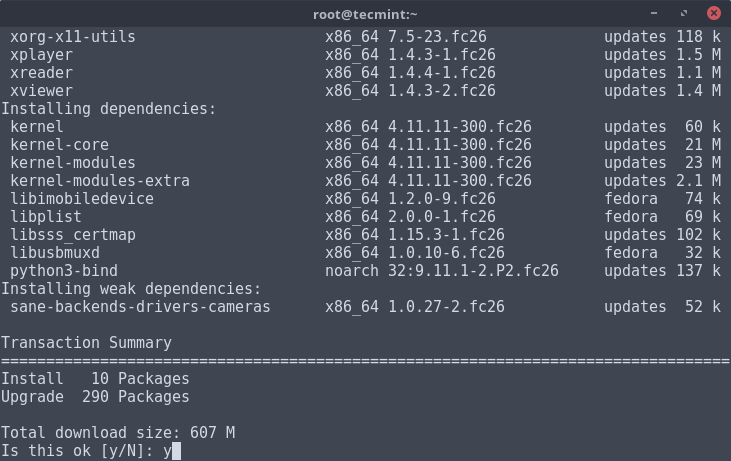

- Selinux ejabberd fedora 26 how to#
- Selinux ejabberd fedora 26 install#
- Selinux ejabberd fedora 26 drivers#
- Selinux ejabberd fedora 26 upgrade#

SELinux policy is administratively-defined and enforced system-wide. Stepping beyond traditional UNIX permissions that are controlled at user discretion and based on Linux user and group IDs, SELinux access decisions are based on all available information, such as an SELinux user, role, type, and, optionally, a security level. Access is only allowed if an SELinux policy rule exists that specifically allows it.įine-grained access control. SELinux policy rules define how processes interact with files, as well as how processes interact with each other.
Selinux ejabberd fedora 26 drivers#
Selinux ejabberd fedora 26 upgrade#
Selinux ejabberd fedora 26 how to#
How to Set NVIDIA as Primary GPU on Optimus-based Laptops.How to join an Active Directory or FreeIPA domain.

Getting started with Apache HTTP Server.Managing keyboard shortcuts for running an application in GNOME.Controlling network traffic with firewalld.Displaying a user prompt on the GNOME login screen.Understanding and administering systemd.Performing administration tasks using sudo.Configuring networking with NetworkManager CLI (nmcli).Disabling the GNOME automatic screen locking.Setting a key shortcut to run an application in GNOME.Configuring Xorg as the default GNOME session.

Selinux ejabberd fedora 26 install#
ie: with this enabled yum will not install an i686 package to update an x86_64 package. Set to true to make 'yum update' only update the architectures of packages that you have installed. logfile - Full directory and file name for where yum should write its log file.Defaults to kernel, kernel-bigmem, kernel-enterprise, kernel-smp, kernel-debug, kernel-unsupported, kernel-source, kernel-devel, kernel-PAE, kernel-PAE-debug. Kernels in particular fall into this category. installonlypkgs = List of package provides that should only ever be installed, never updated.exclude - List of packages to exclude from updates or installs.debuglevel - Debug message output level.Determines whether or not yum keeps the cache of headers and packages after successful installation. cachedir - Directory where yum should store its cache and db files.For a complete list, please consult the yum.conf man page, found here: Below are a few of the more commonly used ones. Yum_globalconfig can take most of the same parameters as a yum_repository, plus more, too numerous to describe here. Yum_globalconfig ' /my/chroot/etc/yum.conf ' do


 0 kommentar(er)
0 kommentar(er)
